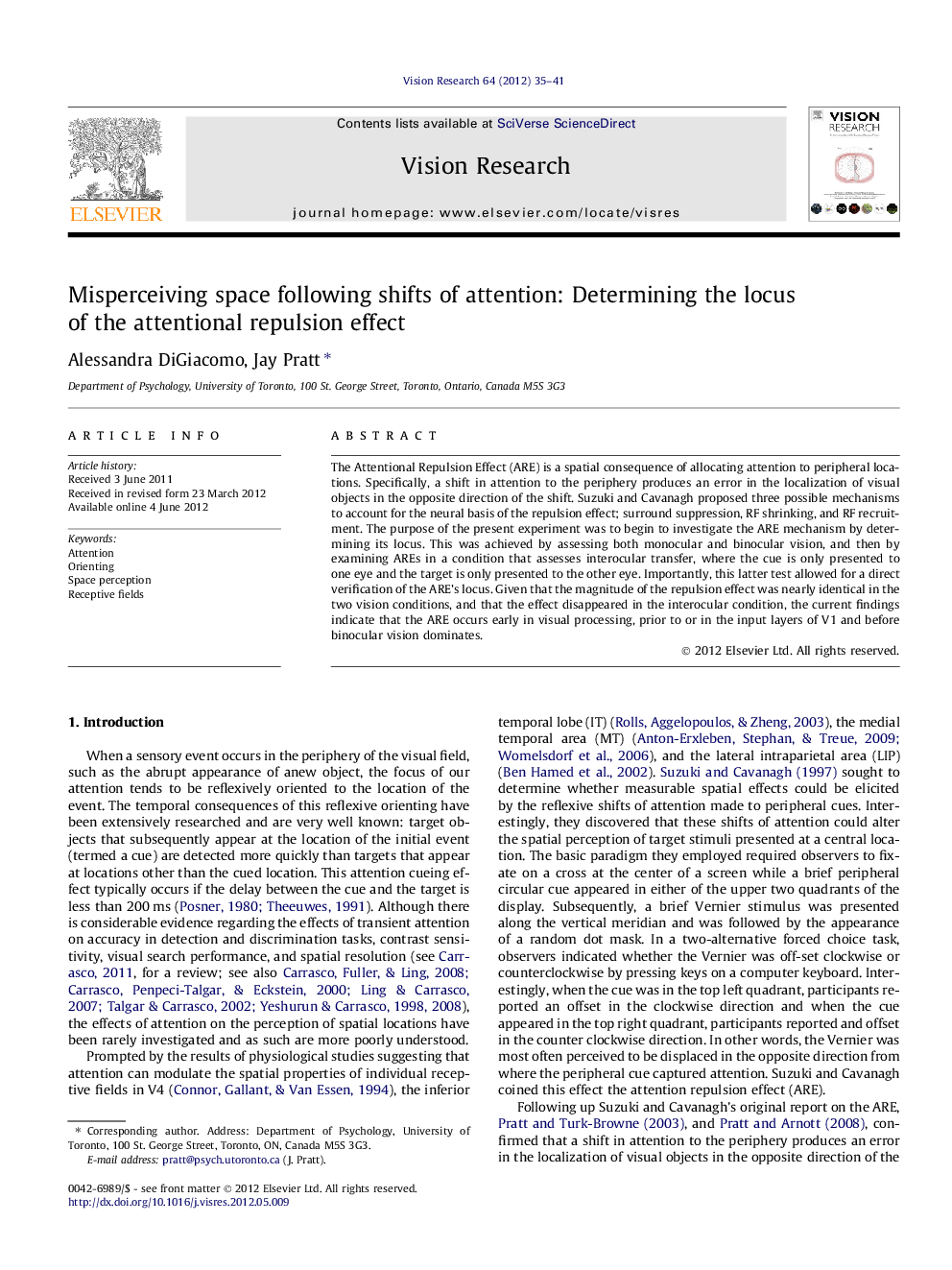| Article ID | Journal | Published Year | Pages | File Type |
|---|---|---|---|---|
| 4033949 | Vision Research | 2012 | 7 Pages |
The Attentional Repulsion Effect (ARE) is a spatial consequence of allocating attention to peripheral locations. Specifically, a shift in attention to the periphery produces an error in the localization of visual objects in the opposite direction of the shift. Suzuki and Cavanagh proposed three possible mechanisms to account for the neural basis of the repulsion effect; surround suppression, RF shrinking, and RF recruitment. The purpose of the present experiment was to begin to investigate the ARE mechanism by determining its locus. This was achieved by assessing both monocular and binocular vision, and then by examining AREs in a condition that assesses interocular transfer, where the cue is only presented to one eye and the target is only presented to the other eye. Importantly, this latter test allowed for a direct verification of the ARE’s locus. Given that the magnitude of the repulsion effect was nearly identical in the two vision conditions, and that the effect disappeared in the interocular condition, the current findings indicate that the ARE occurs early in visual processing, prior to or in the input layers of V1 and before binocular vision dominates.
► The Attentional Repulsion Effect (ARE) generates misperceptions of space. ► The present study consists of three experiments that determine the locus of the ARE. ► Two experiments compare binocular and monocular vision, and interocular transfer. ► These experiments show that the ARE occurs in the very stages of visual processing. ► Experiment 3 confirms this conclusion by showing that the ARE is not affected by visual transients.
